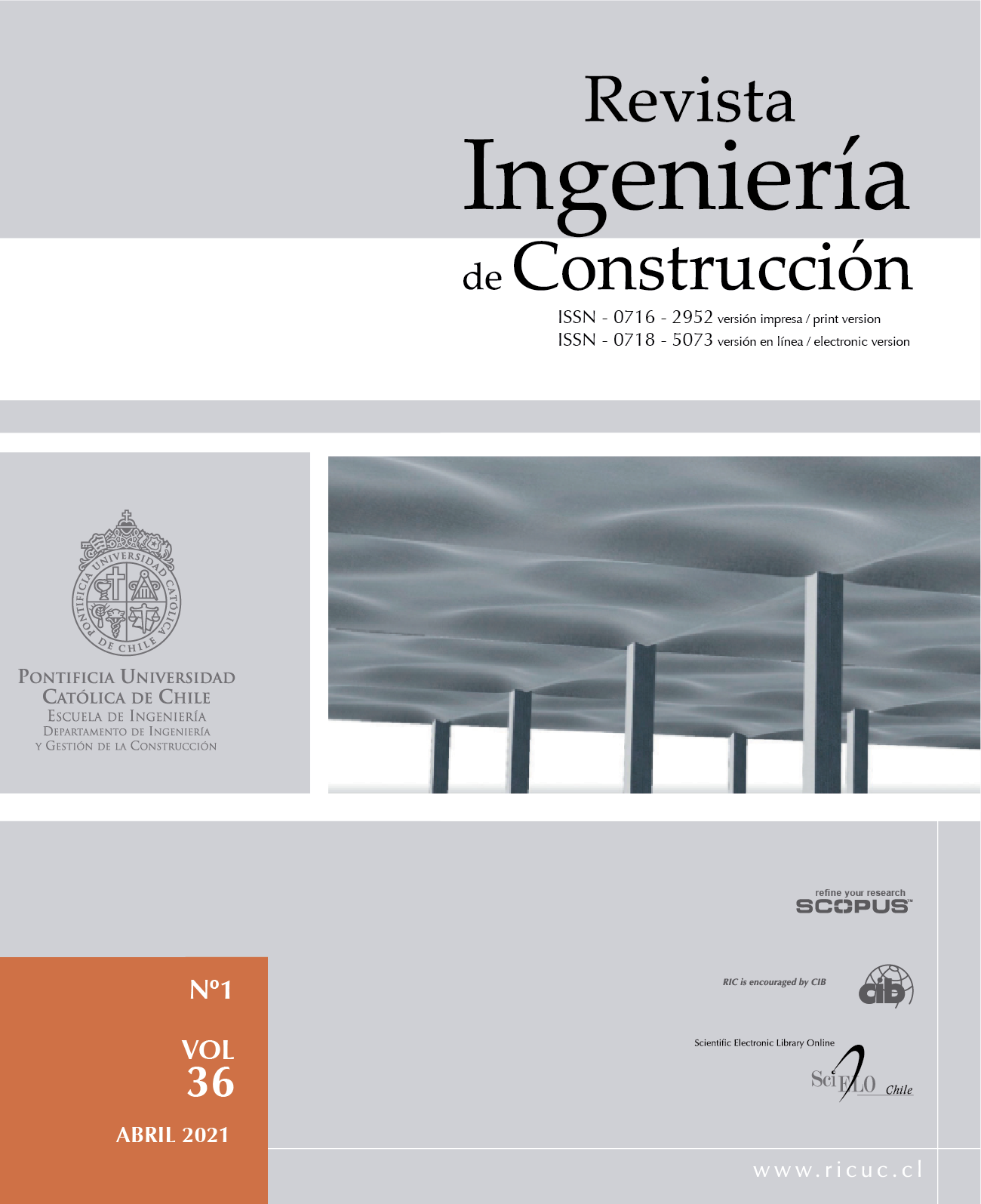Identification of a Steel Stairs by Operational Vibration Measurement
DOI:
https://doi.org/10.4067/S0718-50732021000100059Keywords:
Operational modal analysis, finite element method, numeric model calibration, signal processing, natural frequenciesAbstract
This work presents the results of structural evaluations carried out from numerical models based on the finite element method (FEM) for a steel stair with 22.70 meters long, 8.37 high and 1.68 wide, belonging to Olympic Tennis Center, Rio de Janeiro/Brazil. A numerical model was elaborated and fitted to natural frequencies of real structure, which in turn were obtained from an operational modal test. The test was conduced by recording vibrations due to wind and traffic of people at six points over the structure, and from stochastic signals processing of these data considering frequency domain decomposition (FDD) procedure, the experimental natural frequencies were extracted. The calibrated numerical model was then used in the structural evaluation for static and dynamic loads, and it was observed that while the structural behavior obtained through the initial numerical model (used in the development of the project) indicated compliance with design codes criteria, calibrated model pointed out the need for structural reinforcement to meet vibrations service limit.


